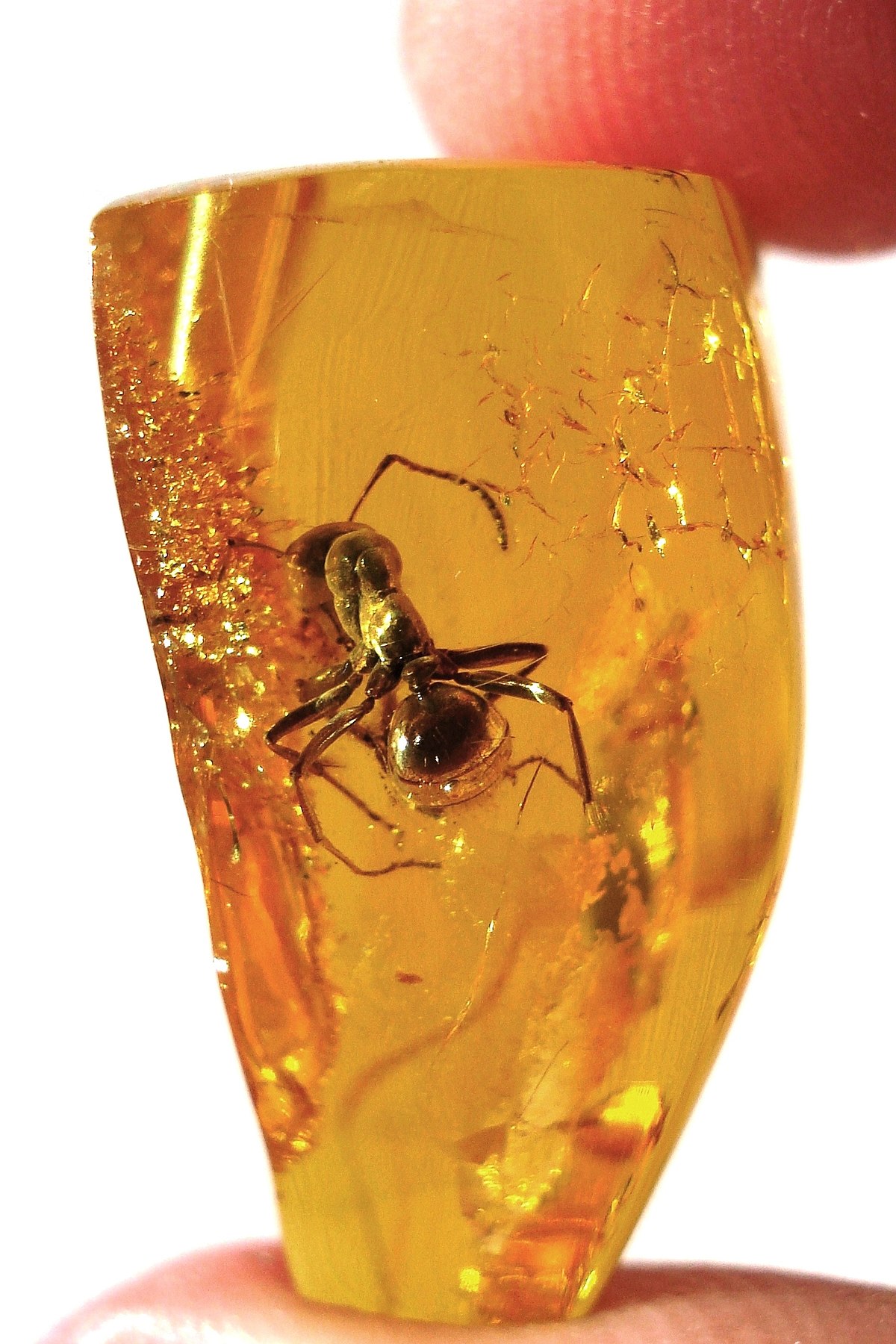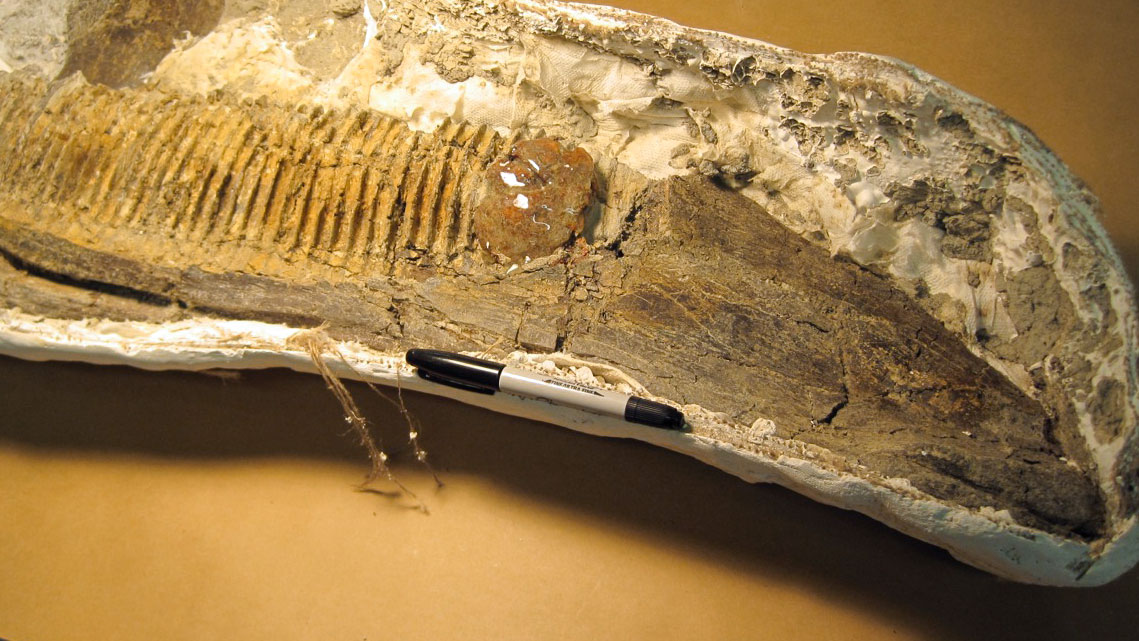Amber In Science - A Fossilized Time Capsule
Amber is a unique substance that has been used for various purposes throughout history. It is a fossilized resin that is millions of years old and is often used in jewelry, art, and even medicine. However, amber also has significant scientific value due to the preserved remains of ancient organisms that are trapped within it. In this article, we will explore the scientific significance of amber in science.
Formation Of Amber
Amber is formed from the resin of trees, which is produced as a defense mechanism against insects and other environmental threats. When the resin flows out of the tree, it can become trapped in the bark or flow onto the ground. Over time, the resin can become buried and undergo a process of polymerization, which transforms the resin into the hard, durable substance we know as amber.
The age of amber varies, but most amber is between 30 and 90 million years old. The oldest known amber is estimated to be 320 million years old and was discovered in the United States.
Scientific Value Of Amber
Amber is an important source of information about ancient ecosystems and the evolution of lifeon Earth. The fossilized remains of insects, plants, and other organisms are often preserved in amber, providing a unique window into the past. The exquisite preservation of these organisms provides scientists with insights into their morphology, behavior, and ecology.
The use of amber in scientific research has been increasing in recent years, with new techniques and technologies allowing for more detailed analysis of the fossilized remains. For example, X-ray computed tomography(CT) scans have revealed the internal structures of amber-encased insects, providing new insights into their biology.
Applications Of Amber In Science
Amberhas a wide range of applications in scientific research. Some of the most significant include:
Paleontology
Amber is a valuable source of information for paleontologists studying the evolution of life on Earth. The fossilized remains of insects, plants, and other organisms can provide insights into their morphology, behavior, and ecology.
Ecology
Amber can provide insights into ancient ecosystems and the interactions between organisms. For example, the presence of certain plant species in amber can indicate the types of habitats that existed in the past.
Chemistry
Amber can be used to study the chemical properties of ancient organic materials. For example, amber can be analyzed to determine the composition of the atmosphere in the past.
Medicine
Amber has been used for medicinal purposes for centuries. Its antimicrobial properties have been studied extensively, and it is believed to have a range of health benefits. Some research suggests that amber can help with pain relief, inflammation, and immune system function.
Types Of Amber
Some types of amber, such as blue amber and green amber, have a rare and striking coloration that makes them highly sought after by collectors and jewelers alike. Other types of amber, such as black amber and white amber, have unique physical properties that make them useful in a range of scientific and industrial applications.
Learning about the different types of amber can be a fascinating journey into the world of natural history and geology. By understanding the unique characteristics of each type of amber, we can better appreciate the many ways in which this remarkable substance has shaped our understanding of the natural world and our place within it. Whether you are a scientist, a collector, or simply a lover of beautiful things, the study of amber is sure to captivate your imagination and inspire your curiosity.
You can learn more on amber in this comprehensive guideto the different types of amber that exist from Bernardine.com.
Preservation In Amber
The preservation of organisms in amber is a unique process that occurs due to the resin's chemical properties. The resin is highly resistant to decay and is also sticky, which allows it to capture organisms and other debris. Over time, the resin hardens and can become buried, preserving the trapped organisms for millions of years.
The preservation of organisms in amber is often remarkable, with the specimens often retaining much of their original morphology and even internal organs. This level of preservation provides scientists with a wealth of information about the biology and ecology of ancient organisms.
Amber In Popular Culture
Amber has been used in art and jewelry for centuries and is often associated with luxury and beauty. Its warm, golden color and translucent qualities make it a popular choice for decorative objects, from ancient Egyptian jewelry to modern-day sculptures.
Amber has also been the subject of popular culture, appearing in literature, films, and even video games. In the Jurassic Park franchise, amber containing dinosaur DNA is used to create the park's iconic attractions. In the video game Pokemon, Amber is a rare fossil that can be used to revive prehistoric Pokemon.
Amber Mining And Conservation
Amber mining is a significant industry in some parts of the world, particularly the Baltic region. The mining and trade of amber have a long history, with evidence of amber trading dating back thousands of years.
However, amber mining can have negative impacts on the environment, particularly if it is done unsustainably. Illegal mining, in particular, can cause significant damage to natural habitats and biodiversity.
To mitigate these impacts, efforts have been made to promote sustainable amber mining practices and conservation of amber-producing habitats. These efforts include responsible mining practices, protection of amber-producing forests, and support for local communities that depend on amber mining for their livelihoods.
Future Applications
As technology continues to advance, the applications of amber in science are likely to expand. New techniques for analyzing the chemical and biological properties of amber are already yielding exciting results.
One area of research that shows promise is the use of amber to study ancient microbiomes. The preservation of microbes in amber provides a unique opportunity to study the composition and function of ancient microbial communities. This information can help scientists better understand the evolution of microbial life on Earth and how it has impacted the planet's ecosystems.
Another area of research that is gaining interest is the use of amber in materials science. Amber's unique properties, including its hardness, durability, and transparency, make it a promising material for a range of applications, from electronics to biomedicine.
Challenges And Limitations
Despite its many applications, the study of amber also faces some challenges and limitations. One of the primary limitations is the rarity of high-quality amber specimens. Most amber specimens contain relatively small organisms, and larger specimens are exceptionally rare.
Another challenge is the difficulty of extracting genetic material from amber. Although it has been done successfully in some cases, the process is often complicated by the degradation of DNA over time.
Finally, the ethical considerations surrounding amber mining and trade are a significant challenge. As demand for amber grows, there is a risk that unsustainable mining practices could cause environmental damage and threaten the survival of some species.
People Also Ask
What Is Amber Used For?
Amber is primarily used in jewelry making, where it is polished and shaped into beads, pendants, and other decorative objects. It has been used in jewelry making for centuries and is prized for its warm, golden color and unique patterns. Amber is also used in traditional medicine and has been claimed to have healing properties.
What Is Amber Chemical?
Amber is primarily composed of organic compounds known as terpenes and isoprenoids, which are derived from the resin of trees.
The exact composition of amber varies depending on the type of tree it came from and the conditions in which it was formed, but it generally contains a complex mixture of aromatic compounds, such as succinic acid, as well as other organic molecules like esters and alcohols.
How Can Amber Help Scientists?
Amber is a valuable tool for scientists because of its ability to preserve ancient organisms and other materials. Amber can provide valuable information about the biology and ecology of ancient organisms, including their morphology, behavior, and even their genetics. Scientists can use techniques like microscopy, X-ray imaging, and chemical analysis to study the preserved specimens and gain insights into the natural world.
Conclusion
Amber is a truly unique substance that has captured the attention of scientists, artists, and collectors for centuries. Its scientific value lies in the remarkable preservation of ancient organisms and the insights it provides into the evolution of life on Earth.
While challenges and limitations exist, the study of amber in science is likely to continue to yield exciting discoveries and new applications in the years to come. As we move forward, it is important to remember the need for responsible and sustainable practices in the mining and use of this valuable natural resource.

